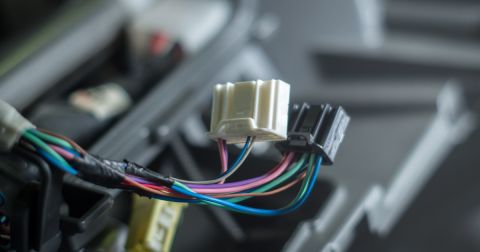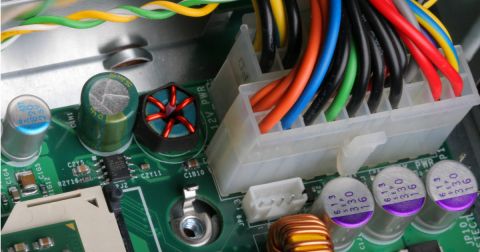Wiring for the Final Frontier: A Guide to Space-Grade Harness Design

Space missions demand the highest levels of reliability due to the hostile environment of space and the inability to perform repairs once a spacecraft is launched. Wiring harnesses are critical components that interconnect various systems, and their design and manufacturing must ensure fault-free performance throughout the mission lifespan. To achieve this, the European Cooperation for Space Standardization (ECSS) and NASA have set stringent standards that guide the design, assembly, and quality control of wiring harnesses. Two important standards in this domain are ECSS-Q-ST-70-61C and NASA-STD-8739.4A. These standards provide detailed guidelines to ensure high-reliability harnesses for space applications.
This article provides an overview of the key principles and requirements outlined in these standards, with a focus on design, material selection, and quality assurance for harnesses used in space applications. As an example some basic harness design using coaxial cables will be used.
Key Aspects of High-Reliability Harness Design
Main goal in this example is to connect two signals from two different PCBs to M1.5 screws terminals. For this purpose two coaxial cables will be used with solder lugs. Shield of both cables connects with one more additional lug.

Figure 1: Basic harness design
Right side will be soldered directly to the PCBs as figure 2 shows:

Figure 2: Connection of coaxial cables to PCBs. Source: ECSS-Q-ST-70-61C
Material Selection
Both standards emphasize the importance of using materials that can withstand the harsh conditions of space, including radiation, extreme temperatures, vacuum, and mechanical stresses like vibration. The selection of conductors, insulators, shielding materials, and connectors must meet stringent criteria to prevent degradation over time:
- Conductor Materials: The most commonly used materials include silver-plated or nickel-plated copper or brass, which offers excellent conductivity and resistance to corrosion.
- Insulation: Insulation must be chosen based on its ability to handle high-voltage loads and resist breakdown. Common materials include polyimide and PTFE (Teflon) due to their heat resistance, mechanical strength, and minimal outgassing in vacuum environments. Check pros and cons of different material insulation on https://nepp.nasa.gov/npsl/wire/insulation_guide.htm
- Shielding: Effective shielding is crucial to minimize electromagnetic interference (EMI). This often involves the use of braided copper or aluminum shields.

Figure 3: Example of individual shield termination. Source: NASA-STD-8739.4A
ECSS-Q-ST-70-61C and NASA-STD-8739.4A both stress the use of qualified materials that have undergone space-specific testing to ensure their performance in the operational environment.
With this requirements in mind it will be used Habia RG-178BU coaxial cable with PTFE insulation and AXON ZLA 2419 single wire (grounding) with ETFE insulation material.
Harness Design and Layout
The design and layout of the harness are critical to reducing electrical noise, mechanical stress, and the potential for wire failure. Key principles include:
- Routing: Cables should be routed to minimize movement, prevent abrasion, and avoid contact with sharp edges or heat sources. Proper clearance between cables and sensitive components is crucial to prevent EMI.
- Bend Radius: Both standards stipulate minimum bend radius for different types of wires and cables to prevent undue stress that can cause fractures or insulation breakdown over time.

Figure 4: Bend Radius for completed Interconnecting Cable or Harness. Source: NASA-STD-8739.4A
- Strain Relief: Strain relief techniques, such as the use of grommets and cable clamps, are necessary to protect wires and connectors from mechanical stresses, particularly during launch and re-entry.
Assembly Process
The assembly process is a critical step in ensuring the reliability of harnesses. Both ECSS-Q-ST-70-61C and NASA-STD-8739.4A provide comprehensive guidelines on the assembly methods, which include:
- Crimping: Crimped connections must be performed with qualified tools and meet specific tensile strength requirements to ensure reliable electrical connections. Over-crimping or under-crimping can lead to weak or open circuits, which are unacceptable in space applications.
- Soldering: For soldered joints, the use of high-quality solder and flux is required to ensure strong, conductive, and corrosion-resistant connections. NASA-STD-8739.4A, in particular, outlines stringent workmanship standards for soldering, including inspection criteria for solder joints.
- Harness Braiding: To protect wires from mechanical damage and improve handling, harnesses are often braided. This process must be performed to avoid gaps or overlapping that could compromise the integrity of the harness.
For the assembly process you can prepare as much detail diagrams as technician needed.

Figure 5: Assembly drawing
Contamination Control
Contamination is a critical concern for space systems, as particles or residues on harnesses can degrade electrical performance or interfere with sensitive equipment. Both standards emphasize strict contamination control practices:
- Cleanroom Environment: The assembly of harnesses must occur in a cleanroom environment to prevent contamination from dust, oils, and other foreign materials. ECSS-Q-ST-70-61C places particular emphasis on this, specifying cleanroom classes and protocols for personnel entering these controlled areas.
- Handling Practices: Operators must wear gloves and use proper handling tools to avoid contamination from skin oils and other substances. Regular cleaning and inspections are required throughout the assembly process.
Testing and Verification
To ensure that harnesses meet reliability requirements, comprehensive testing is required at every stage of production, from material selection to final assembly. Key testing methodologies include:
- Electrical Testing: Continuity, insulation resistance, and high-voltage dielectric testing are essential to verify the electrical integrity of the harness. Both standards specify the voltage levels and acceptance criteria for these tests.
- Thermal Cycling: To ensure that harnesses can withstand the extreme temperature fluctuations encountered in space, thermal cycling tests are conducted. These tests involve exposing the harness to high and low temperatures to evaluate its mechanical and electrical performance under stress.
- Vibration and Shock Testing: To simulate the mechanical stresses of launch and landing, harnesses are subjected to vibration and shock testing. This ensures that the assembly remains intact and functional throughout its operational life.
Quality Assurance and Workmanship
Both ECSS-Q-ST-70-61C and NASA-STD-8739.4A emphasize the importance of quality assurance and strict adherence to workmanship standards to ensure the reliability of harnesses. Every step of the design, assembly, and testing process must be meticulously documented, and personnel must be trained and certified to perform their tasks:
- Inspection: Visual and functional inspections are performed throughout the manufacturing process to identify potential defects, such as insulation damage, improper routing, or poor solder joints. These inspections follow detailed criteria outlined in both standards.
- Certification of Operators: Technicians assembling harnesses must be certified to ensure that they understand and can apply the standards. Both NASA and the ECSS provide certification programs for this purpose.
Conclusion
High-reliability harness design is a cornerstone of ensuring mission success in space exploration. By adhering to standards like ECSS-Q-ST-70-61C and NASA-STD-8739.4A, engineers can design and assemble wiring harnesses that withstand the extreme conditions of space while providing reliable electrical performance throughout the mission lifecycle. These standards guide every aspect of harness design, from material selection and assembly techniques to rigorous testing and contamination control, ensuring that space systems remain operational in the most demanding environments.
As space missions become more complex and ambitious, the role of well-designed, reliable wiring harnesses becomes ever more critical. Understanding and implementing the best practices outlined in these standards are vital steps in building space systems that perform flawlessly over long-duration missions.











